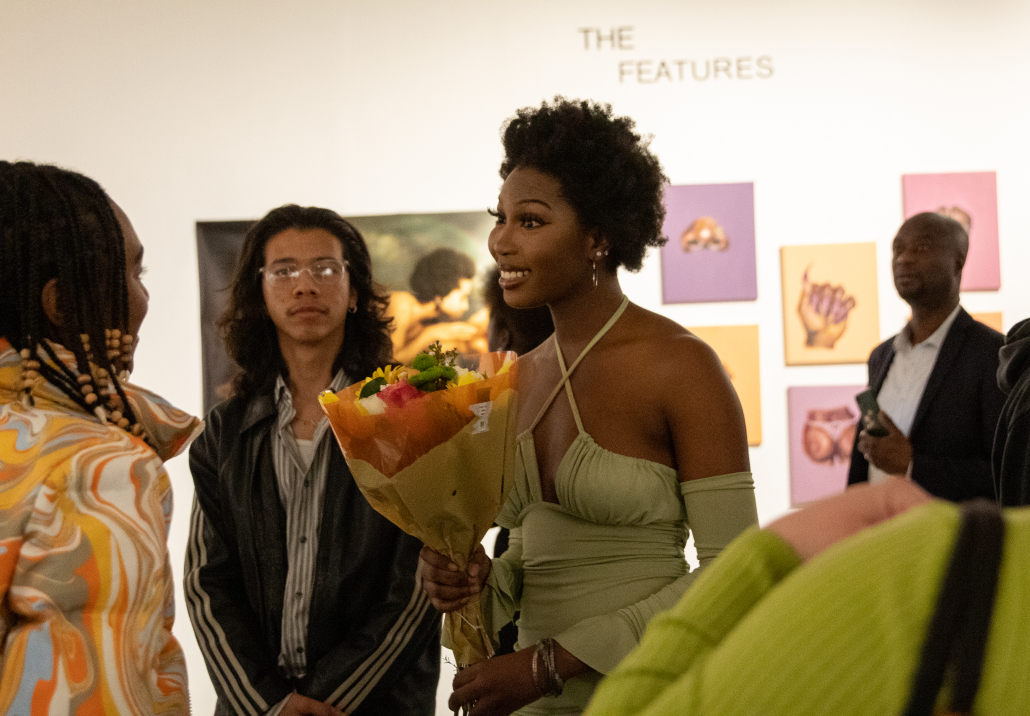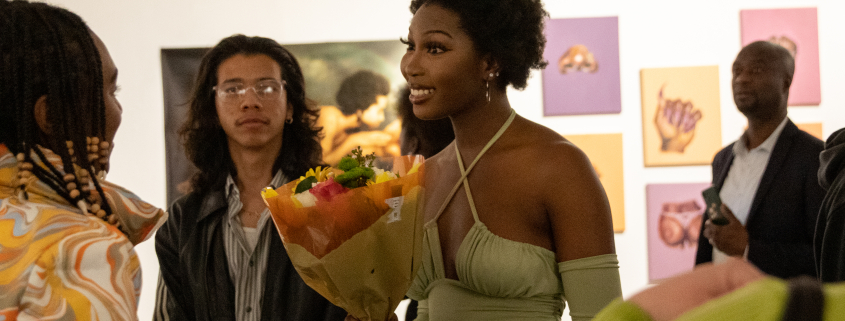Representation through Black artistry

Black History Month is not only a month for the remembrance of the generations of Black individuals and communities who fought for liberties throughout history, but also a month celebrating Black culture as a whole. This year, Black History Month follows the theme of “Black Resistance,” and the exercising of forms of resistance against persistent oppression.
One important form of such resistance is through the creation of spaces for Black artists to share their artwork and their culture, on their own terms. On Feb. 2, two USC Roski students, Jayna Dias and Angel Itua, held the opening to their art exhibit “The Black Experience” in the Roski Fine Arts Gallery, which featured their artwork as a visual representation of their found experiences, struggles and the intersectionality between their identity and culture.
To display their artwork, Dias and Itua chose to configure their work into sections that encapsulate their experiences: “The Features,” “The Hair” and “The Struggle.” Within these sections, Dias and Itua beautifully crafted works featuring a multitude of art mediums, such as photography and paintings, as a way of bringing multiple perspectives and interpretations of Black representation to light.
“We chose the most integral or most important parts of what makes up a culture. For example, our hair is so important in Black culture,” said Itua, a junior majoring in art. “The features that we have [are] so important to Blackness. The struggle that we have is what created Blackness in the first place. The history of it and the excellence, there is excellence wherever you see Blackness. So we just wanted to highlight that.”
Sydney White, a freshman majoring in cinematic arts, film and television production, visited the art exhibit Thursday in interest of exploring their art and in supporting Black artists. White expressed a particular connection to the exhibition as a Black student and said the impact of Dias’ and Itua’s exhibition goes far beyond the surface.
“For me, this exhibition, it means a lot because it’s made by us, so it’s not only someone trying to interpret our experience, but they’ve actually experienced it,” White said. “It means more that it’s coming from someone who’s actually gone through these things. They’re not just taking us and making it some sort of exhibition. This is truly their experience and I think it’s really cool.”
Dias said the exhibition as a symbol of representation. The importance of such representation is found within all levels of this exhibit, cycling from viewer interaction to even participants involved in the artwork themselves.
Kyla Carter, a model in one of the untitled photographs within the exhibit, was unaware of what the exhibit was beforehand, but said the experience was “organic,” with Itua telling Carter“to just go for it.”
“We knew it was ‘The Black Experience,’ but we didn’t know all the artists that were gonna be a part of it. We didn’t know what photos they were gonna choose, how it would be presented,” Carter said. “It’s stunning. It’s great to see people of color shining and represented in this way.”
“The Black Experience” serves as a powerful demonstration of art as a crucial instrument of agency and showcases the talent and vision of Dias and Itua.
“We were looking around USC and there wasn’t really a lot of space for Black artists,” Itua said. “So we wanted to create something for the Black experience and the culture that we have. We wanted to celebrate it because it needs to be celebrated and USC really needs a space like that. So we decided to take the step for ourselves and create something for us, for all the students.”
The exhibition is available for viewing from Feb. 3 to 15 at the Roski Fine Arts Gallery.

